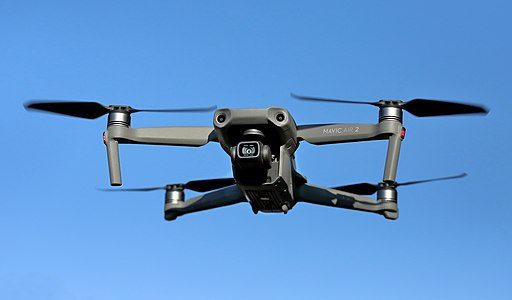The new U.S.-China tariffs, including a hefty 34% on Chinese imports, are stirring up the drone world.
Chinese Drones Getting Pricier
As these tariffs take effect, drones and their add-ons from China are expected to cost more in the U.S., with DJI feeling the pinch. Buyers might see prices go up for popular models like the DJI Mavic series because importers have to deal with the extra costs. Accessories such as batteries and filters could also become pricier. Although some sellers are trying to keep prices down by selling stock bought before the tariffs, this won’t last forever. Once those supplies run out, prices will likely jump. Also, some DJI shipments are being held up at U.S. ports for checks related to the Uyghur Forced Labor Prevention Act, which might cause shortages.
People sometimes wonder why things have to get complicated when they seem so simple at first.
Challenges for U.S. Makers
At first, it might look like these tariffs give U.S. drone makers a chance to catch up with DJI by making prices closer. But the reality isn’t that straightforward. Many U.S. companies need parts from China, like motors and sensors, to build drones. China’s new export rules on important materials like samarium and gadolinium could mess up supply lines and raise costs for U.S. companies, reducing any advantage they might have gained. Production delays might also make it hard to meet higher demand.
Supply Chain Struggles
Drone-making depends on parts from all over the world, so the tensions between the U.S. and China could shake things up everywhere:
- Rare Earth Materials: China’s limits on these minerals might lead to shortages or increased prices for key drone parts.
- Production Shifts: Some companies are looking at places like Vietnam or Mexico to make their products and avoid tariffs, but switching takes time and isn’t an instant fix.
Effects on Resellers and Services
Paul Rossi, who writes for DRONELIFE and runs NineTenDrones, explains how tariffs hit them hard. “On February 17, 2025, Nine Ten Drones received notification from distributors that prices on Enterprise and Agras product lines were increasing ‘due to newly implemented tariffs on Chinese goods,’” said Rossi. “Meanwhile, supply issues have lessened, but confusion has reached all-time highs…any pricing standards are out the window for a Value Added Reseller that isn’t buying direct from DJI.” His business focuses on the extra value they offer, but the tariffs have forced them to shift away from being just resellers. “Nine Ten Drones is no longer able to compete in price against the drop shippers of e-commerce and the big box movers,” he said. “We are maintaining focus on our NC based clients in public safety, education, and AEC who value local support and service.” He adds, “We are now in a position that potential clients have to decide if the premium we have to add on top to stay in business is worth the enterprise support that comes with the purchase. End users looking for the cheapest price may need to shop online – but be cautious for who you’re buying from and how you’re paying.”
Cloudy Future
Uncertainty is the name of the game due to tariffs, customs holdups, and supply chain issues affecting both businesses and buyers. Shops might tweak pricing strategies, limit high-demand items, or discount older models to manage stock. If shortages or price hikes persist, buyers may opt for secondhand drones. U.S. manufacturers face rising component costs, which could limit innovation and push them to cut costs instead of developing new tech. Meanwhile, regulations like the National Defense Authorization Act add more uncertainty for Chinese drones in the U.S.
What Lies Ahead?
It’s tough to say what these tariffs will ultimately lead to, but here are some possibilities:
- Expect prices for Chinese drones to climb as stores adjust to costlier imports.
- China’s export restrictions might disrupt supply chains for both Chinese and U.S. drone makers.
- Changes in buying habits, like a spike in demand for refurbished drones or homegrown alternatives, might alter the market landscape.
The situation highlights how connected the global drone industry is now. Both Chinese and American players must adapt to the swiftly changing scene.
